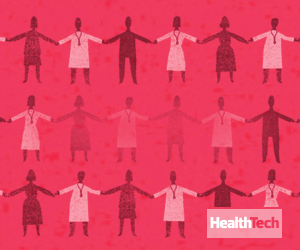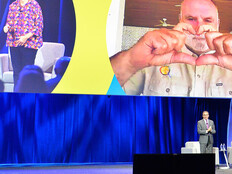Teams use a virtual visit platform called EmOpti, which has facilitated 300,000 remote consults for Jefferson Health and other clients over the past five years, according to a press release from the Wisconsin-based company.
EmOpti also claims that clinicians can see three times as many patients using the system, a benefit when average national ED wait times exceed 90 minutes.
What Is Tele-Triage, and How Do Healthcare Organizations Use It?
A hub-and-spoke model that can efficiently leverage remote caretakers to provide a first line of consultation — interactions that might spur blood draws, scans or other actions for low-acuity patients — allows onsite ED doctors to focus more on critical cases.
Nurses, who typically don’t have the same ordering privileges, can provide frontline care by working in tandem with onscreen clinicians to reduce bottlenecks.
“We get their orders written, [patients] get their X-ray taken and get their labs done, they get their EKG done,” Hollander says. “Sometimes they even get their CAT scan done before they get into a patient room, depending on how backed up we are. It’s a major, major advantage.”
At Milwaukee-based Aurora Health Care, which has used the EmOpti platform for several years, the length of ED visits was reduced by an average of 45 minutes.
“It’s a change in how you triage patients,” Paul Coogan, the organization’s president of emergency services, told the biotech news site Xconomy. “There was initially some resistance. The nurses thought it was going to add a lot of time to triage. [But] I think they appreciate having some extra help.”
Other efforts are having a similar impact. Blanchfield Army Community Hospital in Fort Campbell, Ky., uses a telemedicine platform in its busy ED to treat nonemergency cases, mHealth Intelligence reports. Those patients are seen via virtual visit by primary care doctors at an Army medical center more than 400 miles away in Augusta, Ga.













